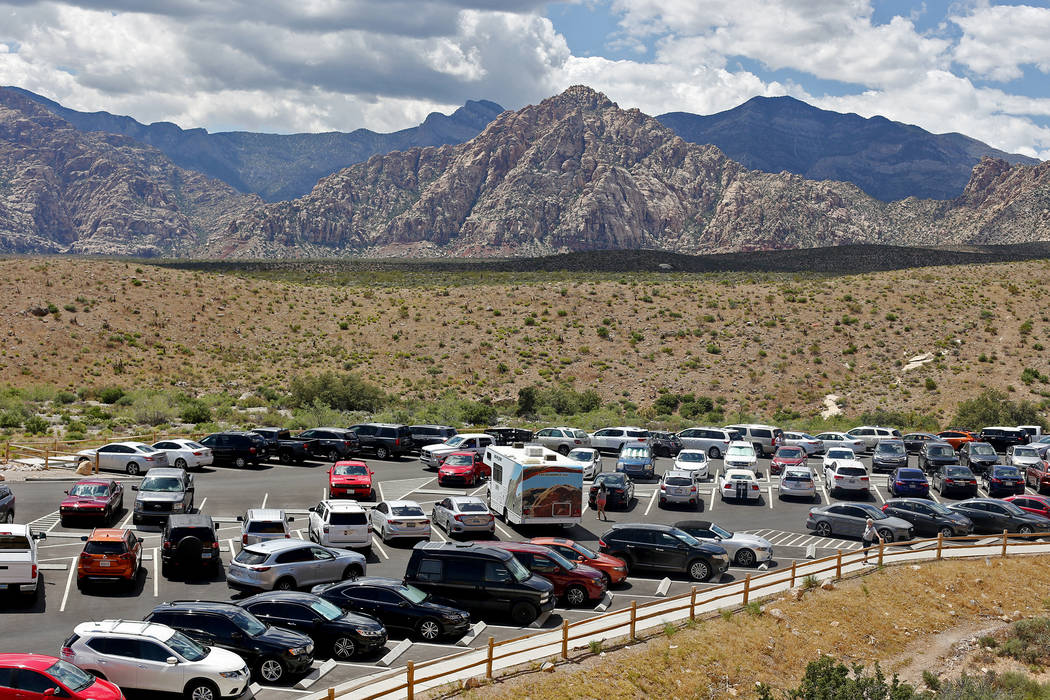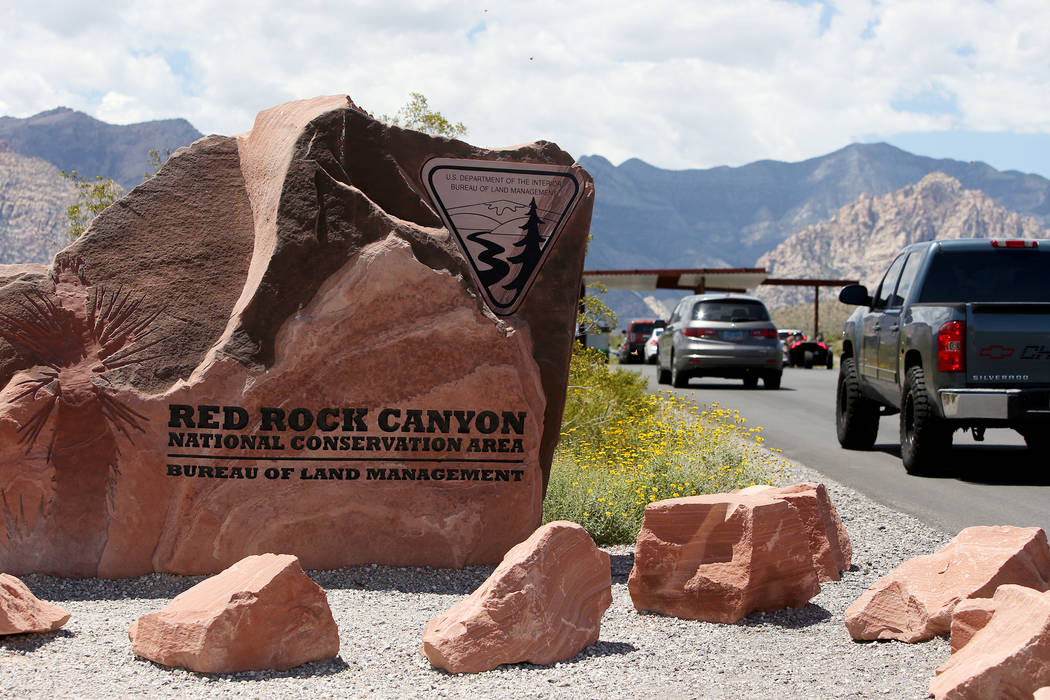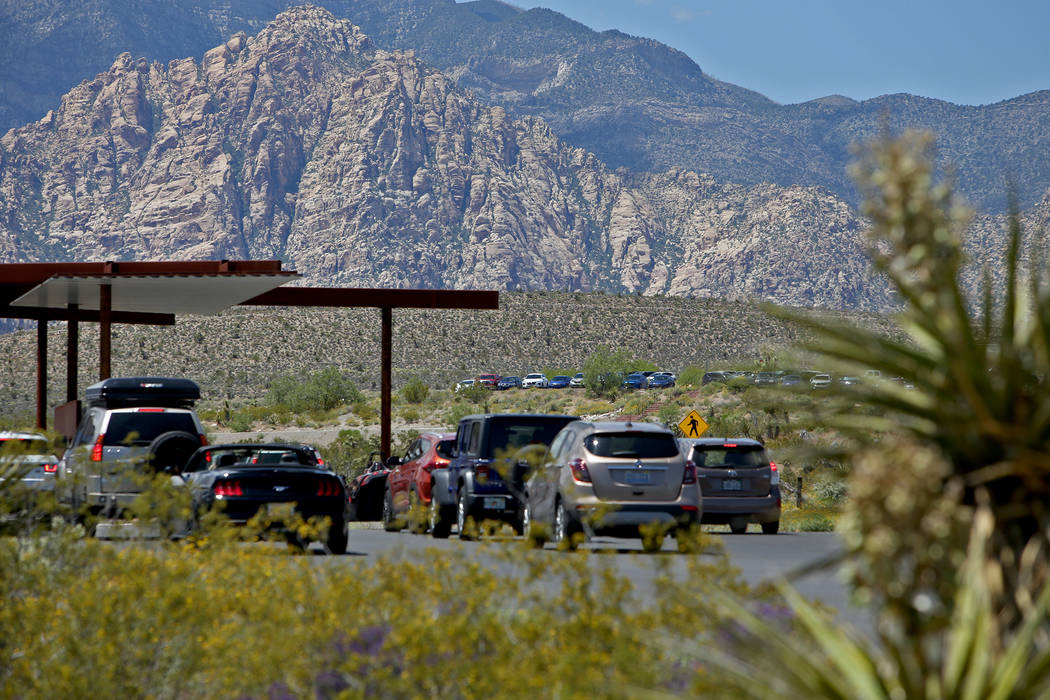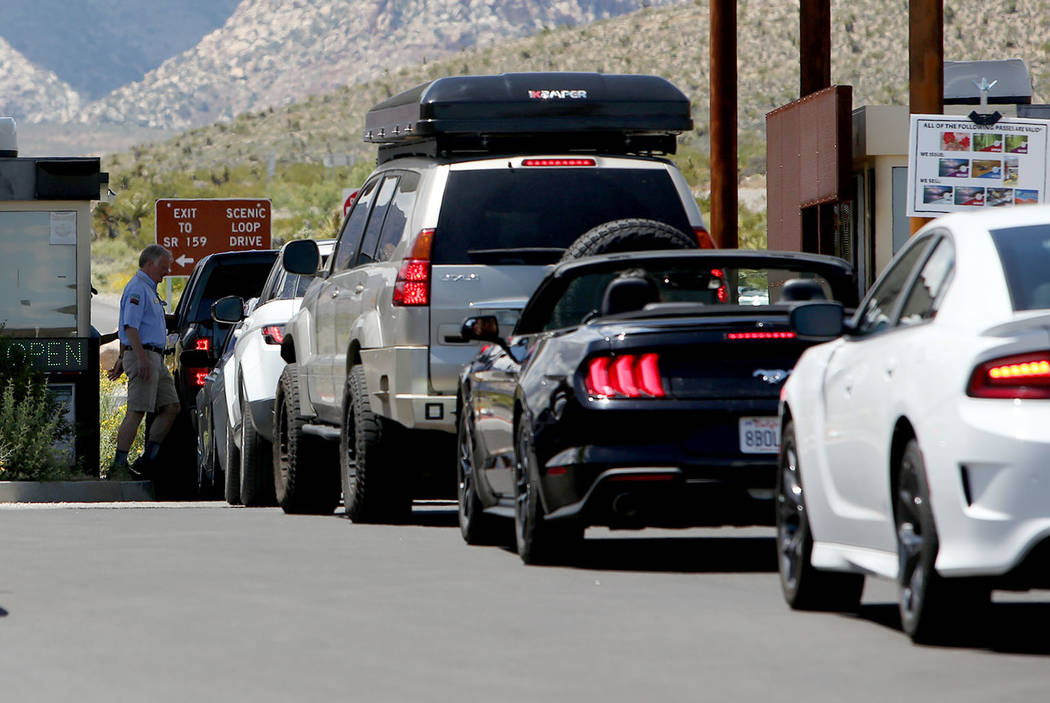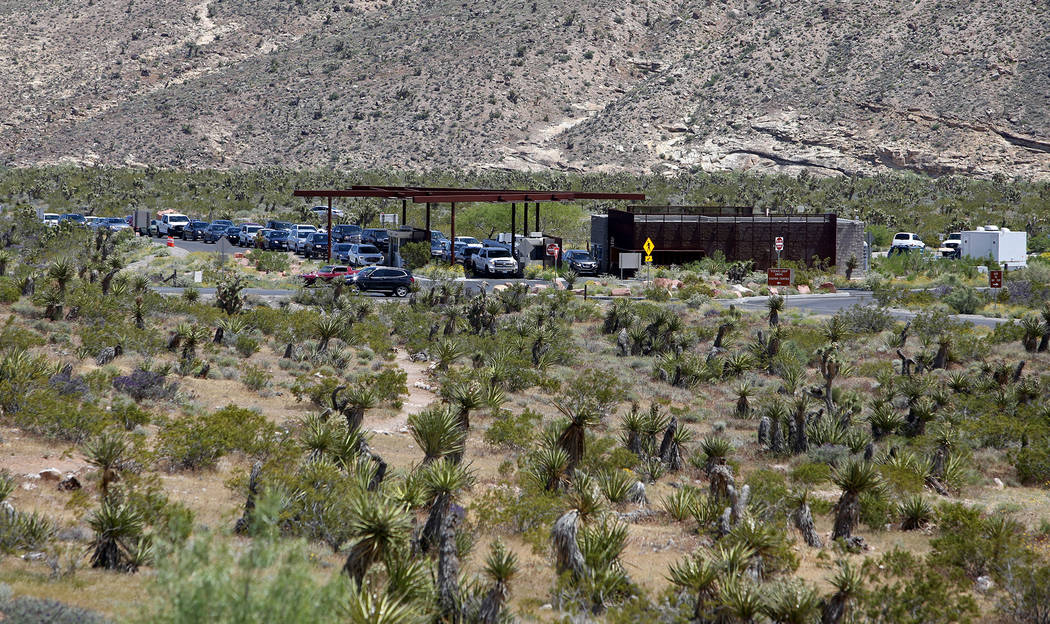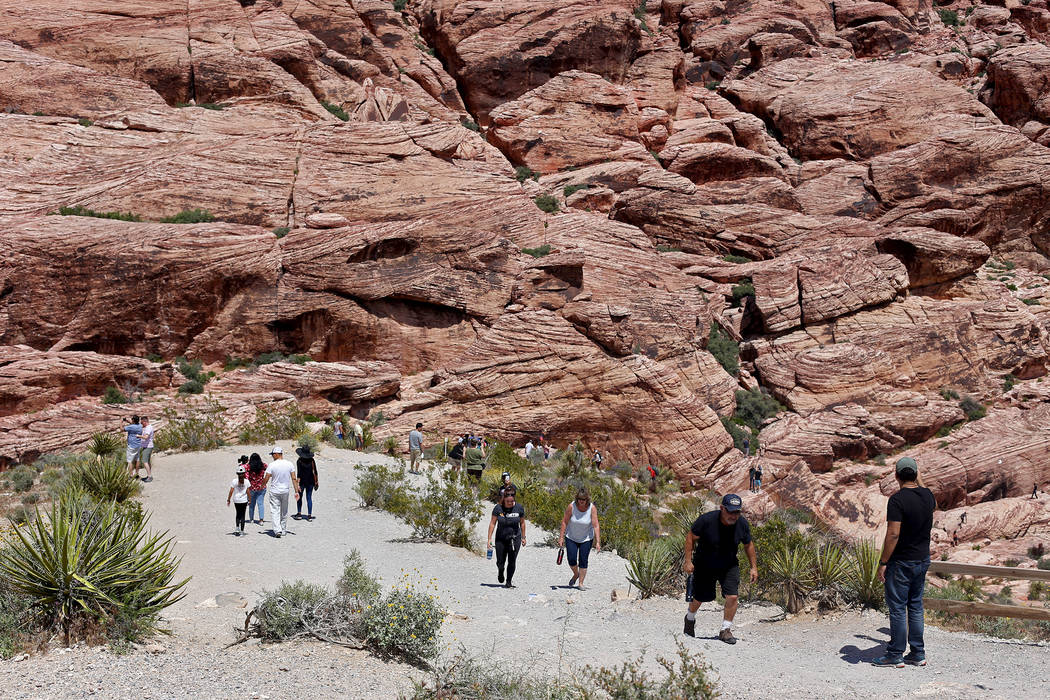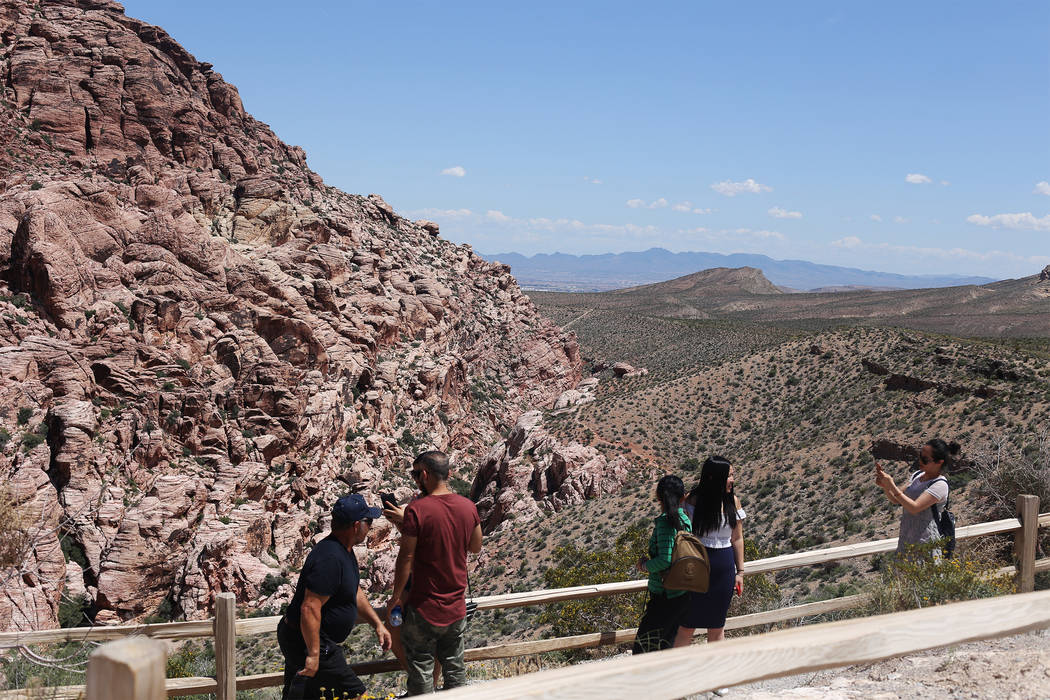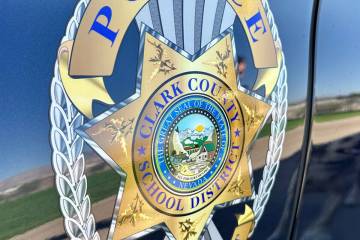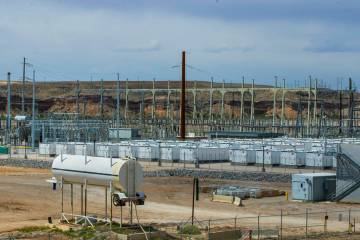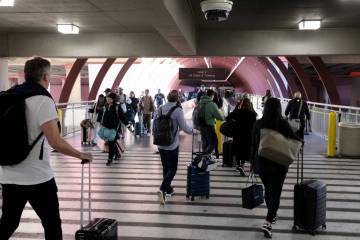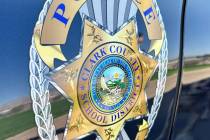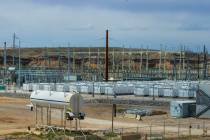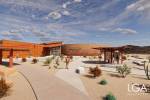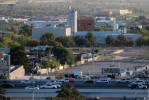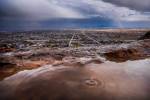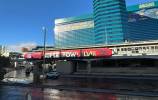Red Rock Canyon scrambling to handle record crowds
Hot weather has cooled things down for the moment at one of Las Vegas’ busiest outdoor destinations, but officials know the crush will return to Red Rock Canyon when summer gives way to fall.
The Bureau of Land Management is considering a range of changes to address growing seasonal congestion at Red Rock Canyon National Conservation Area, where visitation has almost tripled in the past six years.
More than 3 million people visited Red Rock Canyon last year alone, shattering the old attendance record by more than 600,000. Prior to 2013, the park had never seen even 2 million visitors in a single year.
About half of the visitation is concentrated in the “fee area” along the Scenic Drive, which represents about 10 percent of Red Rock’s land area of almost 200,000 acres.
The onslaught has forced the BLM to temporarily close the 13-mile loop on days when the parking lots fill and traffic at the fee gates backs up onto state Route 159.
Bureau spokesman John Asselin said that sort of thing never happened a few years ago. “Now we have to have temporary capacity closures almost every weekend when the weather is ideal,” he said.
“Any beautiful Saturday could create an explosion of people,” said Andy Hart, executive director of the Southern Nevada Conservancy, the BLM’s nonprofit partner at the conservation area. “I think everybody who cares about Red Rock Canyon is paying attention to this capacity and congestion issue. We want visitors to have a good experience.”
No shuttle plans yet
The options under consideration include adding more lanes — including a fast-pass line — at the fee station and creating a dedicated entrance and exit lane for taxis and ride-hailing services to move traffic through more quickly.
The BLM also hopes to secure funding for a return road that would give motorists a way to get back to the visitor center without driving the entire 13-mile, one-way Scenic Drive. The 2.5-mile shortcut between Sandstone Quarry and the visitor center is expected to improve traffic flow and provide better access for emergency vehicles.
Red Rock officials wanted to build the return road several years ago, but they couldn’t secure federal funding for the roughly $800,000 project.
For now, the BLM and its nonprofit partner at Red Rock, the Southern Nevada Conservancy, are working to boost cellphone coverage and provide public Wi-Fi service at the visitor center and the fee station to improve communication, provide real-time traffic monitoring and allow tourists to hail rides back to the Strip.
Catrina Williams, BLM’s field manager for Red Rock, said that if congestion continues to grow, officials might consider a seasonal shuttle system like the one that runs through the heart of Zion National Park for much of the year.
But that comes with its own challenges, including the need for a large central lot where people can park to catch the shuttle, she said.
“This is a national conservation area. We can’t do a lot of development,” Williams said.
A marketing success
Longtime local conservationist John Hiatt said any possible response to the problem will be limited by funding and the BLM’s larger mission to protect the area.
“Essentially what’s happening at Red Rock is the same thing that’s happening at Grand Canyon and Zion and other popular parks in the West: rapidly increasing visitation and decreasing budgets. That’s a recipe for disaster,” Hiatt said. “The challenges are multiple, and the solutions all involve money.”
Hiatt played a major role in the push to expand Red Rock in the early 1990s. “I’m sorry we didn’t make it bigger,” he said.
In the decades since then, the valley’s population has exploded and so has interest in the outdoors by residents and visitors alike, Hiatt said. Outdoor retailers and tourism agencies have only fueled that trend.
“People have been advertising the outdoors for years, and that message is getting through. There are just a lot more people looking for outdoor recreation,” Hiatt said. “The marketing department is way out ahead of everyone.”
Studying the problem
The BLM operates its busiest site in the nation with a permanent staff of about 15 people. Its primary nonprofit partner at Red Rock, the Southern Nevada Conservancy, chips in another 40 paid employees and volunteers, mostly to staff the fee booths and visitor center gift shop.
The conservancy also recently helped fund and produce a capacity study for the conservation area.
“We all saw it as something we needed,” Hart said. “I do think it will help with management decisions going forward.”
The Great Basin Institute, a Reno-based environmental research and conservation group, delivered the study to the BLM this year.
The bureau and its partners have so far declined to release the full report while they analyze its findings, but the executive summary identifies the busiest times of year as late March into early April, Thanksgiving week and other holidays and fee-free days.
Weekends tend to be busier than weekdays, and traffic tends to peak between 9 a.m. and 1 p.m.
The executive summary had this to say about the BLM’s response to the problem so far: “Specific management direction about addressing increasing visitation and capacity-related impacts at (Red Rock Canyon) is severely lacking in official policy and management documents.”
Avoiding the crush
That’s not to say nothing has been done.
In 2016 and 2017, the BLM received more than $10 million from the Federal Highway Administration to repave the Scenic Drive and expand the parking lots at the visitor center and trailheads along the loop. Asselin said that project added 300 parking spots to the fee area. It was a big improvement, but it wasn’t enough to stave off temporary closures on the busiest days.
He said Red Rock’s management team plans to release the full capacity study in the coming weeks, once “a decision is made on how to address the issue.”
In the meantime, visitors can avoid congestion on busy days by using places outside the fee area or arriving early in the morning or late in the afternoon.
And when they are there, they can protect the park from its own popularity by obeying the signs and following the rules.
It’s simple, said Williams, the Red Rock field manager: “Park where you’re supposed to park. Hike where you’re supposed to hike. Throw your trash in the trash can. Pick up after your pets.”
Contact Henry Brean at hbrean@reviewjournal.com or 702-383-0350. Follow @RefriedBrean on Twitter.
Rush on Red Rock
The Bureau of Land Management uses traffic and trail counters to estimate visitation throughout Red Rock Canyon National Conservation Area. Those numbers have increased dramatically since the park 20 miles west of the Strip opened its first visitor center and drew just 20,000 people in 1982.
1999: 1,127,500
2000: 1,153,500
2001: 765,000
2002: 1,135,800
2003: 1,240,600
2004: 880,100
2005: 845,100
2006: 866,200
2007: 837,200
2008: 748,400
2009: 901,000
2010: 1,066,600
2011: 1,115,300
2012: 1,022,200
2013: 2,021,000
2014: 1,753,300
2015: 2,420,700
2016: 2,221,100
2017: 2,137,600
2018: 3,040,300
Source: Bureau of Land Management



